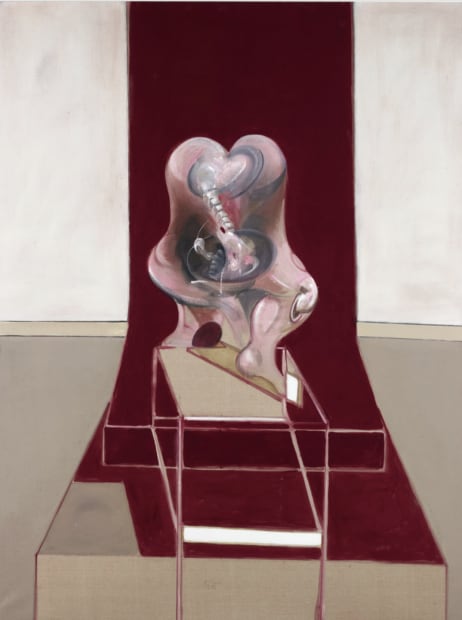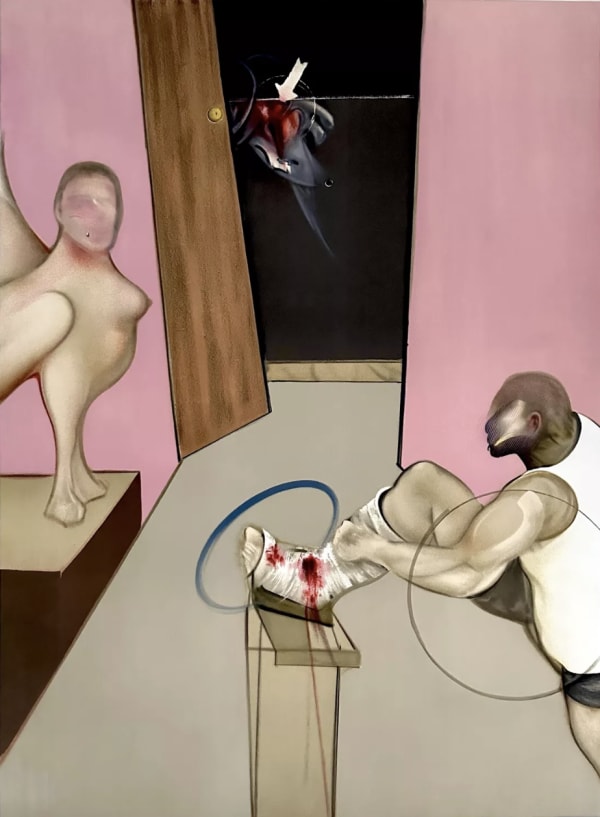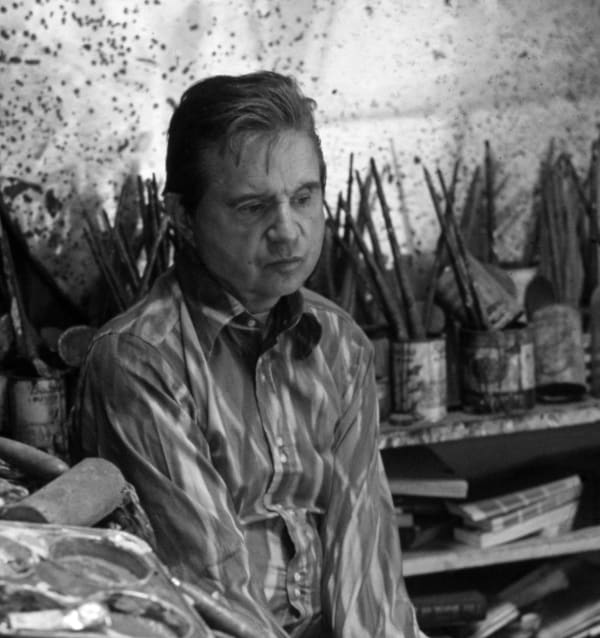-

Triptych inspired by the Orestelia of Aeschylus, 1981
Oil on Canvas, each panel 198 x 147.5cm
©The Estate of Francis Bacon, Image reproduced for informational purposes only
-
The mystery lies in the irrationality by which you make an appearance - if it is not irrational, you make an illustration.
- Francis Bacon
The themes of The Oresteia resonate deeply within Bacon’s Triptych, mirroring his lifelong fascination with the darker sides of human nature. Aeschylus’s trilogy confronts cycles of violence, guilt and retribution, asking whether humanity can ever escape its own destructive instincts. These same ideas are central to Bacon’s art, where figures seem trapped within invisible structures, doomed to repeat gestures of torment or desire. The tension between fate and free will, so integral to Greek tragedy, becomes visual in Bacon’s work through confinement, distortion and repetition.



